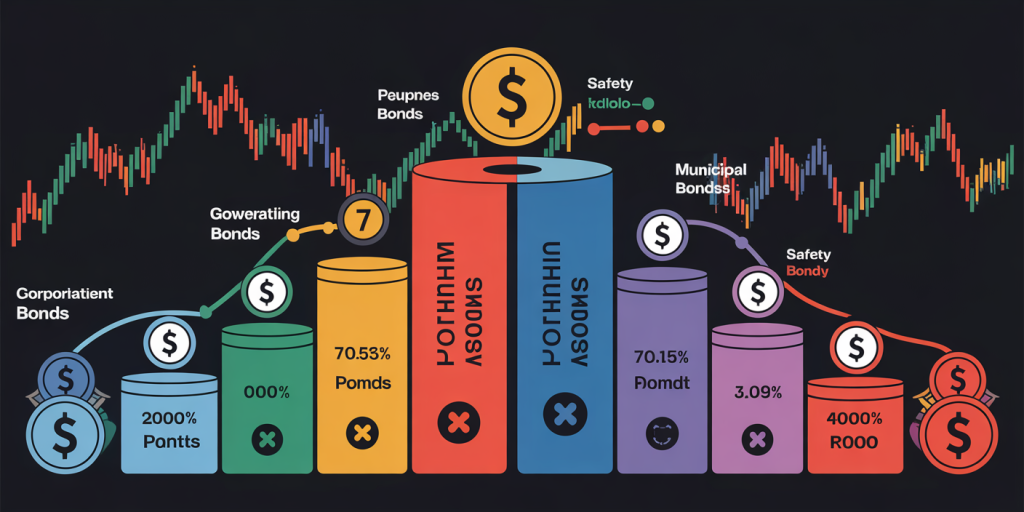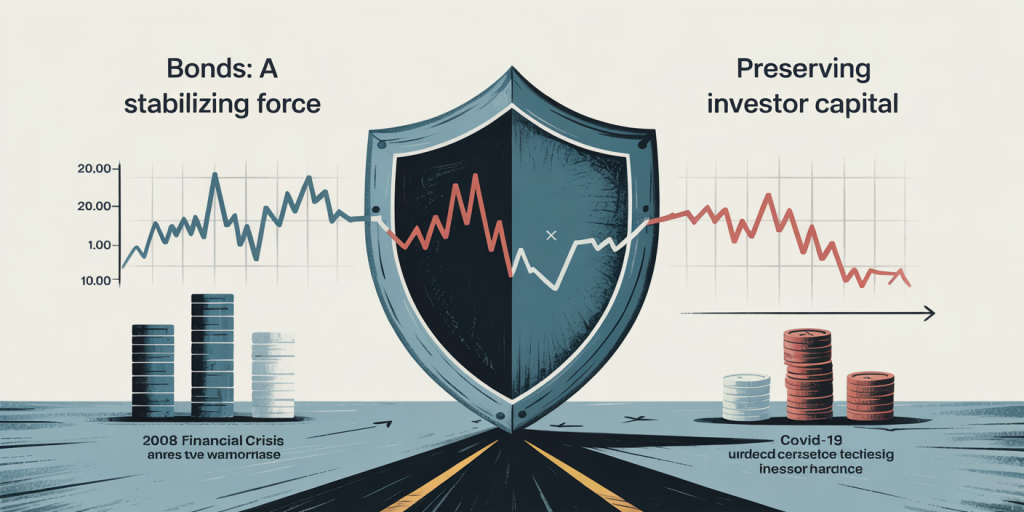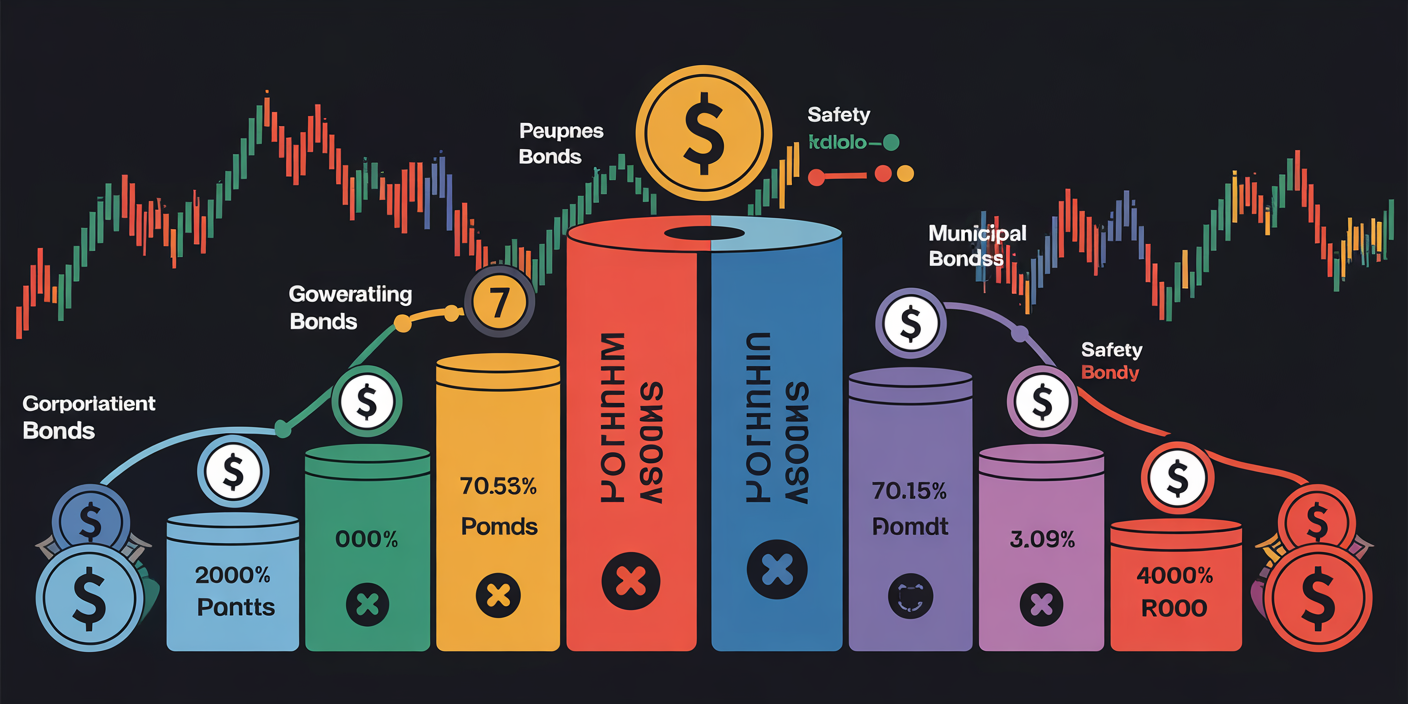The Role of Bonds in a Balanced Portfolio Explained
In the world of investing, crafting a robust portfolio is key to achieving financial goals while managing risk. Among the variety of assets available, bonds play a vital and often misunderstood role. Bonds—debt instruments issued by governments, municipalities, and corporations—offer investors a steady income stream and diversification benefits that can balance the sometimes volatile nature of stocks and other riskier investments.
The concept of a balanced portfolio is rooted in the principle of diversification, where different asset classes contribute uniquely to risk and return outcomes. Bonds typically serve as a defensive anchor, providing more stability compared to equities. This article explores how bonds contribute to a balanced portfolio’s overall health, offers practical examples, and compares bond types to help investors make informed decisions aligned with their financial goals.

Bonds as a Stabilizing Force in Investment Portfolios
Bonds have traditionally been considered safe-haven assets within a portfolio. Unlike stocks, which represent ownership in a company and whose prices can fluctuate widely based on corporate profits, market sentiment, and economic events, bonds represent loans made to issuers who promise periodic interest payments and return of principal at maturity.
This fundamental difference means bonds tend to exhibit lower volatility than equities. For example, during the 2008 financial crisis, the S&P 500 lost over 37% of its value, while the Bloomberg Barclays US Aggregate Bond Index, a broad measure of the U.S. bond market, gained approximately 5.2%. This divergence underscored bonds’ role in offsetting losses and preserving capital during turbulent times.
Investors seeking to guard against stock market downturns often allocate a portion of their portfolio to bonds. The fixed-income characteristic of bonds provides predictable cash flows, which can be particularly appealing for conservative investors or those nearing retirement. Moreover, bonds can act as a source of liquidity when equities are underperforming.
Income Generation and Predictability
One of the most attractive features of bonds is their income-generating capacity. Bonds pay interest regularly, often semi-annually, based on specified coupon rates. This predictable income stream differentiates bonds from stocks, which may or may not pay dividends. For retirees or income-focused investors, bonds serve as a reliable source of cash flow.
Take, for instance, a 10-year U.S. Treasury bond issued with a 3% coupon rate. Investors receive $30 annually for every $1,000 invested until maturity, alongside repayment of the principal. This predictability contrasts sharply with dividend-paying stocks, where payouts can fluctuate or be suspended depending on a company’s profitability and management decisions.
It’s notable that bond yields fluctuate with interest rates, inflation expectations, and creditworthiness of issuers. According to data from the Federal Reserve (2023), the yield on the 10-year Treasury note has ranged between 1.3% during post-pandemic lows to over 4% amid inflation concerns. Such yield variations affect bond prices inversely, but for many investors, the steady income trumps short-term price volatility.
Risk Mitigation Through Diversification
Bonds’ role in risk mitigation is one of the main reasons portfolio managers incorporate them. When bond prices move inversely or are less correlated to stocks, they reduce overall portfolio volatility and improve risk-adjusted returns.
Historically, the correlation coefficient between the S&P 500 and the Bloomberg Barclays US Aggregate Bond Index has hovered around 0.2 to 0.3. This relatively low positive correlation means bonds do not move in perfect tandem with stocks, proving valuable to smooth portfolio performance.
To illustrate, consider an investor with a 60/40 portfolio: 60% stocks and 40% bonds. During periods of economic growth, stock returns often outperform bonds, boosting total portfolio returns. Conversely, during downturns or recessions, bonds tend to hold their value or appreciate, cushioning the portfolio from steep losses.
| Asset Allocation | Average Annual Return (10 years) | Standard Deviation (Volatility) |
|---|---|---|
| 100% Stocks | 11.5% | 16.0% |
| 60% Stocks / 40% Bonds | 9.3% | 9.5% |
| 100% Bonds | 3.2% | 4.1% |
*Source: Morningstar and CFA Institute data, 2013–2023*
This table exemplifies how adding bonds reduces portfolio volatility (risk) significantly while still providing reasonable returns, making it an efficient strategy for many investors.
Types of Bonds and Their Roles in Portfolios
Not all bonds are created equal. Understanding the different types available, as well as their risk-return profiles, helps investors choose bonds that suit their portfolio needs.
Government Bonds
These include U.S. Treasuries, which enjoy the highest credit rating due to the federal government’s backing. They are considered virtually risk-free in terms of default. Treasuries offer low yields but high liquidity and safety, making them ideal for conservative investors or those seeking crisis protection.
Corporate Bonds
Issued by companies, corporate bonds generally offer higher yields than Treasuries to compensate for higher default risk. Investment-grade bonds from financially strong companies balance risk and return moderately. High-yield or “junk” bonds carry greater risk but provide enhanced income potential, suitable for risk-tolerant investors.
Municipal Bonds
Issued by states or local governments, municipal bonds often offer tax-exempt interest income, which is attractive to investors in higher tax brackets. Their risk varies based on issuers; some municipalities have faced fiscal stress (e.g., Detroit’s bankruptcy in 2013), but many provide stable returns with tax advantages.
Each bond type brings distinct performance traits. For instance, during economic expansions, corporate bonds may outperform government bonds due to improved corporate earnings. Conversely, in recessions, Treasuries typically shine with rallying bond prices driven by flight-to-safety demand.
Real-World Examples Highlighting Bonds in Action
To comprehend bond dynamics, real cases provide clarity:
Case Study 1: The 2008 Financial Crisis
During the 2008 crash, the stock market plunged violently, yet Treasuries rallied. Investors flocked to safer government bonds, benefiting from price appreciation and steady coupons. Balanced portfolios containing bonds fared better compared to all-equity holdings, preserving investor wealth.

Case Study 2: COVID-19 Pandemic Market Reaction
In early 2020, as COVID-19 emerged, stocks again suffered sharp losses. The Federal Reserve’s aggressive lowering of interest rates pushed bond yields down but prices up. Investors holding high-quality bonds not only received income but also experienced capital gains, reducing overall portfolio drawdowns.
Such events underscore how bonds serve as a buffer against equity downturns, highlight the importance of credit quality, and demonstrate interest rate impact on bond performance.
Tactical Allocation: Adjusting Bond Exposure According to Market Conditions

Investors need not maintain a fixed bond allocation. Instead, tactical adjustments can optimize performance relative to market cycles and personal risk tolerance.
During periods of anticipated stock market volatility or recession, increasing bond allocation can preserve capital. Conversely, in strong bull markets, reducing bond exposure in favor of growing equities may maximize gains.
The concept of the “age-in-bonds” rule, which suggests allocating bonds as a percentage equal to one’s age (e.g., a 40-year-old holding 40% in bonds), remains a popular rule of thumb but may not suit all investors given evolving market conditions.
Investors today must consider factors such as low interest rates, rising inflation, and global economic instability when deciding bond exposure. Using bond laddering—investing in bonds maturing at staggered intervals—can also help manage reinvestment risk in fluctuating interest rate environments.
Future Perspectives: Bonds Amid Changing Economic Landscapes
The role of bonds in portfolios is evolving as global economic environments shift. Persistently low interest rates since the 2008 financial crisis challenged traditional bond income assumptions. However, recent inflationary pressures and central banks’ tightening cycles have driven yield increases, restoring some attractiveness.
Looking ahead, bonds will continue to play a vital role in balanced portfolios but demand greater attention to credit quality and duration management. Emerging markets bonds and inflation-protected securities (e.g., TIPS) are gaining popularity to provide diversification and protect purchasing power.
Technological advances and changing demographics also influence bond investing, with robo-advisors and automated portfolio rebalancing making bond allocation more accessible. Meanwhile, geopolitical risks and potential new monetary policy frameworks may inject volatility that demands dynamic bond strategies.
In summary, bonds remain an indispensable component of diversified portfolios providing income, risk mitigation, and stability. As financial markets evolve, investors and advisors must stay informed and adapt bond strategies accordingly to optimize portfolio resilience and returns.
References: Morningstar Direct, 2013-2023 Performance Data Bloomberg Barclays US Aggregate Bond Index Reports Federal Reserve Economic Data (FRED), 2023 CFA Institute Research Foundation, “Portfolio Management and Asset Allocation” U.S. Treasury Historical Yield Curve Rates
